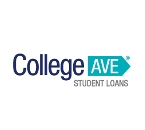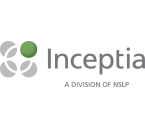Results from Modeling a One-Time FAFSA Using Institutional Data, 4:15 - 5:15 p.m.
By Allie Bidwell, NASFAA Senior Reporter
As lawmakers continue to discuss ways to streamline and simplify the process of applying for federal student aid, some have considered whether having students file the FAFSA just one time may be a solution. But questions remain as to whether the move could create unintended consequences, depending on how much or whether students’ Expected Family Contributions (EFCs) change from year to year.
In the Tuesday afternoon session, representatives from NASFAA, the Center for American Progress (CAP), the Association of Community College Trustees (ACCT), and Colorado State University shared insight from preliminary research conducted on what a one-time FAFSA could look like. Using grant funding, NASFAA, CAP, and ACCT modeled what would happen if students only filled out the FAFSA once every few years, rather than annually. The group examined data used to calculate aid eligibility for the same set of students over multiple years and was able to gauge whether results are stable enough to make a one-time FAFSA workable.
CAP’s Colleen Campbell said that while there have been positive steps made toward FAFSA simplification — such as the availability of a Spanish version, skip logic, the Data Retrieval Tool, and the implementation of prior-prior year (PPY) income data and the Early FAFSA — there are still barriers to FAFSA completion.
A one-time FAFSA, she said, could make the process simpler for students, reduce the burden on administrators, and increase certainty in aid eligibility. At the same time, there is the potential that changes in students’ circumstances may not be noted, that year-to-year data could be lost, or that some may attempt to game the system.
The preliminary analysis included data from 2010 to 2016 from 21 colleges and 181,788 students with more than one year of data. Of those students, about two-thirds (64 percent) were Pell Grant recipients. The group set out to examine how much students’ EFCs change from year to year, and whether those changes impact how much aid they receive, as well as whether there are differences by the type of student data.
Among Pell Grant students, the research showed that about 47 percent had no change in their EFC. Among all students, about 30 percent had no change to their EFC, while about 30 percent had a $5,000 change or higher to their EFC. The research also showed that independent students had much more stable EFCs than dependent students. Among independent Pell recipients, about 63 percent had no change in EFC, compared with 33 percent of dependent Pell recipients. Just 3.9 percent of independent Pell recipients had a $5,000 or higher change in EFC.
At two-year colleges, 42 percent of dependent Pell students and 65 percent of independent Pell students had no change in EFC. At four-year colleges, 22 percent of dependent Pell students and 54 percent of independent Pell students had no change in EFC.
“There’s little question that the FAFSA is complicated,” said NASFAA’s Jill Desjean. “But a one-time FAFSA isn’t necessarily this magic wand that’s going to solve all the FAFSA’s problems.”
For many students, Desjean said, the first time they fill out the FAFSA is the most difficult. “The hardest time would be that one time,” Desjean said. “That’s where I step back and think whether a simplified, annual FAFSA would be the better option.”
Some policy considerations to keep in mind, according to Desjean, include whether a one-time FAFSA would be extended to everyone, or limited to a certain subset of students, such as Pell-eligible students. Additionally, policymakers should consider how Professional Judgment would work with a one-time FAFSA — would it be required each year, or would the aid office revert to the student’s original EFC?
Still, the idea of a one-time FAFSA could be powerful for low-income students, said ACCT’s Jee Hang Lee and Colorado State University’s Joseph Donlay.
“Thinking about this in terms of a permutation on PPY and the Early FAFSA — that was a tremendous opportunity to open doors for access and early awareness in terms of financial aid options,” Donlay said. “This seems like it’s very complementary to that effort.”
Publication Date: 6/26/2018













You must be logged in to comment on this page.